If you sense a bit of magic in the air when you visit Hamamatsu (浜松市) in Shizuoka Prefecture, it isn’t just your imagination. The spirit of “Yaramaika” is woven into the fabric of Hamamatsu’s history and culture, a catalyst for the leaps of innovation the companies founded in this city have been inspired by.
Yaramaika (やらまいか) is a word in the local dialect that symbolizes the entrepreneurial spirit of the region: “Let’s do it anyway!” In contrast to the generally cautious approach to change and innovation that Japan is known for, Hamamatsu companies are more likely to leap before they look if they sense an opportunity is at hand. And perhaps it all goes back to the man who took momentous risks and was rewarded by becoming the Shogun who finally united the nation of Japan, Tokugawa Ieyasu.
- The Rise of Japan’s First Shogun & Hamamatsu’s History of Innovation
- Electronic Instruments, Grand Pianos, & Other Instruments in the “City of Music”
- Suzuki, Honda, Yamaha, and the Origins of Japan’s Motorcycle and Automobile Industry in Hamamatsu
- How the Spirit of Innovation Thrives in Hamamatsu
- Akino Fuku Museum: An Architecturally Unique Art Museum of Cedar Wood and Plaster
- Enami Farm: Makers of Award-Winning Marmalade
- Nukumori Koubou: Tote Bags, Slippers, Kimono, & Other Cotton Textiles
- Shunkado: Unagipie, Swanky Dessert Restaurants, & Inspired Design
- Tenryu Hamanako Railroad: An Evangelion-Themed Train & Stunning Seasonal Views
- How to Get to Hamamatsu
The Rise of Japan’s First Shogun & Hamamatsu’s History of Innovation
Tokugawa Ieyasu spent much of his early adult life at Hamamatsu Castle, built in 1570 to defend against the mighty army of legendary warlord Takeda Shingen. It was from this castle where Tokugawa’s skills as a warlord were honed and tested by the strength of Takeda’s forces, perhaps paving the way for him to become Shogun years later.
Tokugawa commanded a formidable army, but not one that could conquer all of Japan by force. For that, he needed to make bold decisions; the wrong choices could cost him his political career, to say nothing of his life. But Tokugawa’s willingness to take risks helped him strengthen his base until he was powerful enough to defeat all his challengers and be named Shogun in 1603, the start of the Edo Period.
Once peace was established in Japan under the Tokugawa clan, Hamamatsu became an important post town along the Tokaido Road, roughly mid-way between Kyoto and Edo (present-day Tokyo) and the largest in the region. With thousands of travelers passing through regularly, commerce grew around the area to provide for their needs, and the foundation for a large and productive city was built.
Electronic Instruments, Grand Pianos, & Other Instruments in the “City of Music”
Yet it wasn’t until the Edo Period ended that Hamamatsu realized its full potential as a center of industry and innovation. In 1887, Yamaha Torakusu built the first domestically produced reed organ and, ten years later, established the company that would later become known as Yamaha Corporation. Soon, Yamaha began producing a variety of musical instruments and sports equipment, leading the way in technologies such as digital synthesizers and creating new materials and designs for tennis rackets and skis. At Yamaha Innovation Road, visitors can not only see and touch a variety of products made by Yamaha through the decades, but musicians can play virtually any of Yamaha’s lineup of musical instruments. If you have ever wanted to experience playing a concert hall grand piano or the unique “silent violin,” you’ll have your chance at this location.
Hamamatsu is home to various musical instrument manufacturers including Kawai, synonymous with concert hall grand pianos and other keyboard instruments, and Roland, a leading manufacturer of synthesizers and other electronic musical instruments.
The presence of these giants of the musical instrument industry has given Hamamatsu the well-earned nickname “City of Music,” which they have fully embraced. Look closely around the city, and you’ll find the musical theme running through the decor, advertising, and, some even say, the city’s architecture.
Suzuki, Honda, Yamaha, and the Origins of Japan’s Motorcycle and Automobile Industry in Hamamatsu
But musical instruments are not the only products in which Hamamatsu has contributed to technological innovation. Suzuki, Honda, and Yamaha, world-class manufacturers of motorcycles and automobiles, originated in Hamamatsu as well.
Since its foundation in 1909, Suzuki has always been passionate about manufacturing from the customer’s perspective under the slogan “Products with Value”. It became an established loom manufacturer in 1920, and later in 1952, the company expanded into transportation equipment, developing a motorcycle with a small engine mounted on a bicycle. In 1955, it launched the highly successful Suzulight, a passenger car that pioneered the way for light cars.
Since then, Suzuki has never looked back, becoming one of the largest automobile manufacturers in the world with production facilities around the globe. Today, visitors to Hamamatsu can visit Suzuki Plaza, with an incredible collection of vintage and modern Suzuki motorcycles, cars, and other products arranged like a walking timeline. On another floor, you can see a re-creation of the Suzuki production floor for car manufacturing and learn the details of each step of the manufacturing process.
Honda Soichiro founded Honda Technical Research Institute in 1946 to manufacture and sell motorized bicycles. This later became Honda Motor Company in 1948 and subsequently developed and sold a variety of motorcycles and automobiles, becoming one of the world’s largest motorcycle and automobile manufacturers. Soichiro Honda’s hometown of Futamata-cho, Tenryu-ku, Hamamatsu City, is home to the Honda Soichiro Craftsmanship Center, a small museum dedicated to the innovative achievements of this famous Hamamatsu native. The museum displays a chronological record of Soichiro Honda’s life and the company’s manufacturing history, as well as photographs and early motorcycles.
Yamaha entered the motorcycle business in the 1950s when it established Yamaha Motor Co. in 1955 as an independent entity from its parent company. 1955 brought great attention to the company when a Yamaha motorcycle won a domestic motorcycle race. Since then, Yamaha Motor Co. has manufactured a wide variety of motorcycles and has become a world-class manufacturer. Today, the company has more than 20 subsidiaries worldwide.
How the Spirit of Innovation Thrives in Hamamatsu
The Yaramaika spirit of Hamamatsu isn’t only limited to its largest businesses. You’ll find that same “can do” confidence in the people of Hamamatsu, from historical figures to modern-day entrepreneurs.
Akino Fuku Museum: An Architecturally Unique Art Museum of Cedar Wood and Plaster
The Akino Fuku Museum is an architecturally peculiar museum is perched on a hillside of Hamamatsu’s Tenryu Ward, where the artist Akino Fuku was born in 1908. Akino’s love for art drew her to travel abroad extensively, even accepting a position as a visiting professor at Visva-Bharati University in India at the age of 54. Akino drew inspiration from her travels from locations such as India, Afghanistan, Cambodia, and Africa and incorporated them into her Japanese art.
Akino constantly challenged the status quo of traditional Japanese art, and her efforts were recognized in 1999 when she received the prestigious Order of Cultural Merit award. Visitors can enjoy the unique architecture and building materials that make up the facility itself, with rich textures of Tenryu cedar wood and rough plaster that Akino herself would have loved. The experience of the natural textures is enhanced by the fact that you must remove your shoes when you enter the exhibition areas and walk on the rattan and marble floors. A rotation of many examples of Akino’s work is rotated through the museum regularly.
Enami Farm: Makers of Award-Winning Marmalade
With its many days of sunshine, Hamamatsu is known for growing delicious citrus fruits. Enami Farm has taken full advantage of the blessings of nature to create an award-winning selection of marmalade recognized worldwide. Enami Farm cultivates and processes its own herbicide-free citrus or purchases fruit directly from farmers they know and trust, maintaining complete control over the production process and ensuring no additives to their product.
While many marmalades are made using citruses bred for sweetness, Enami Farm uses citrus fruit from their original species, giving them a flavor that is true to the type of fruit from which the marmalade is derived. The results speak for themselves, with various kinds of Enami Farm marmalade winning medals at the Marmalade World Competition in the UK, including at least one gold medal for the past six consecutive years.
Nukumori Koubou: Tote Bags, Slippers, Kimono, & Other Cotton Textiles
The production of cotton cloth began in the Hamamatsu area in the Edo Period, but the manufacturing of the power loom by Toyota and the local Suzuki companies made Hamamatsu a center for cotton textile manufacturing in the early to the mid-20th century. The Enshu region, which includes Hamamatsu, has a perfect climate for growing cotton, so Hamamatsu was blessed with raw materials and the technology for producing cotton cloth.
Although foreign competition has significantly impacted cotton textile production in Japan, Nukumori Koubou is one of the companies keeping this Japanese heritage alive and well in Hamamatsu. Known as Enshu Men Tsumugi (遠州綿紬), cotton cloth with an irregular natural texture, Nukumori produces over 150 beautiful striped and solid patterned fabrics that can be used to create attractive everyday objects, from tote bags to slippers to kimono. They use traditional and modern manufacturing techniques perfected in Hamamatsu that are becoming rarer and more precious by the year.
A visit to Nukumori’s headquarters is a treat for craft and textile lovers, with many articles of clothing and household items made from their cloth. Even if you can’t make it to their headquarters, you’ll find Nukumori products on sale at luxury hotels like Hoshino Resorts Kai Enshu or “Hands” (formerly Tokyu Hands) in Entetsu Department Store near Hamamatsu Station.
Shunkado: Unagipie, Swanky Dessert Restaurants, & Inspired Design
While many people don’t know Shunkado by name, they certainly know it by its most popular product: Unagipie. Less of a pie than an elongated baked pastry, this sweet and addictive treat is made with real unagi eel powder mixed into the dough, although you would be forgiven if you didn’t recognize its very subtle flavor.
Unagi is a specialty of Hamamatsu’s Lake Hamana, so it is only natural this surprising ingredient has found its way into this local company’s snack. But Shunkado’s dessert-making repertoire goes well beyond eel-flavored pastries, and their full line of products can be discovered (and tasted) at two unique facilities: SWEETS BANK and nicoe.
Instantly recognizable by its shape: a set of facilities beneath a set of giant desks and chairs, SWEETS BANK is both a swanky dessert restaurant, shop and a branch of Hamamatsu’s Iwata Shinkin Bank. The modern art flair of SWEETS BANK and the creative takes on desserts using Shinkado’s products make it a popular destination for locals and tourists. Nicoe bills itself as a center for community in the Hamakita neighborhood, punctuated by plenty of space for children and their adults to enjoy, both indoors and out. The facility is a collaboration of creators in the architecture, design, and food industries and the cheerful design inspires visitors to enjoy the relaxed atmosphere of Hamamatsu, along with some delicious food, of course! Unlike SWEETS BANK, nicoe isn’t focused solely on sweets; the restaurant here serve healthy and delicious meals that help resolve the guilt of following your meal with a Shunkado-inspired dessert.
Tenryu Hamanako Railroad: An Evangelion-Themed Train & Stunning Seasonal Views
While much of Japan is serviced by one of the regional companies making up the network of Japan Railway, there are still private rail companies providing unique brands of service to train passengers. Tenryu Hamanako Railroad line, also known as Tenhama, connecting some of Hamamatsu’s most beloved tourist destinations with eye-popping views of the area’s natural beauty along the route.
The Tenhama Line connects Kakegawa, with its picturesque wooden castle tower, in the east to the Shinjyohara on the western side of Lake Hamana in the west. Along the way, the line passes rows of pink-blossomed cherry trees in the spring, lush rice paddies and tea fields in the summer, red spider lilies and maple trees in the autumn, and crystal clear views along the Lake Hamana lakefront in the winter.
You can get off the train at popular stations such as Fruit Park, home of the Hamamatsu Fruit Park where visitors can enjoy picnicking and fruit picking, and Kiga, the location of the Kiga checkpoint along the old Tokaido Road from Japan’s Edo Period.
The Tenhama Line doesn’t just rely on the scenic beauty and interesting destinations to keep it popular with train lovers. The company is constantly dreaming up new ways to collaborate with companies and media to make their trains more fun. Fans of the Evangelion anime series will be delighted to ride the Evangelion-themed train and visit Tenryu-Futamata Station, which was featured recently in an Evangelion animated film. Fans will find Evangelion-themed goods on sale at various stations along the line.
How to Get to Hamamatsu
Hamamatsu is so close to Tokyo and Kyoto by bullet train, it makes a great addition to your itinerary if you happen to be staying in either of those cities. To Hamamatsu Station, it takes approximately 1.5 hours from Tokyo and one hour from Kyoto. If you happen to be using the Japan Rail Pass, a stop in Hamamatsu between Tokyo and Kyoto literally costs you nothing.
From its days as a home base for a future Shogun to its frenetic development as a city of music and motor vehicles to the present-day innovation of local businesses and artists, the thread of innovation runs long in Hamamatsu, woven through history and culture. For visitors to Japan, Hamamatsu is an opportunity to see innovation in action and enjoy the beautiful and interesting attractions of Hamamatsu in light of its unique history.
Sponsored by: Hamamatsu City



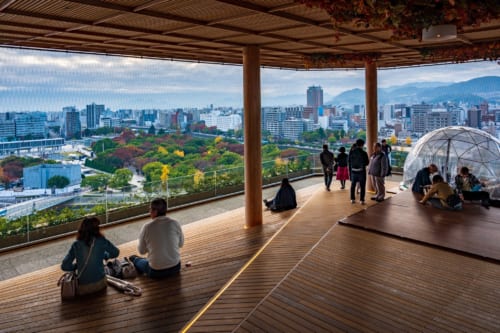
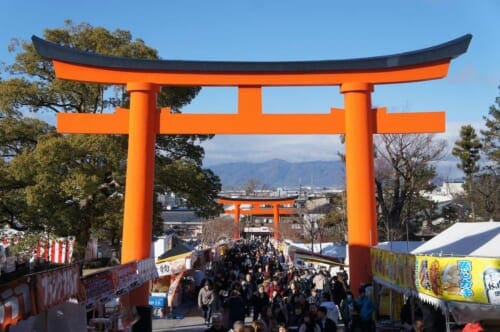
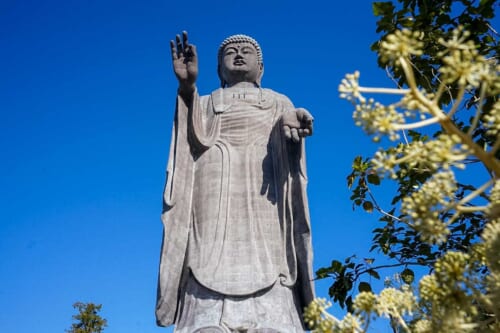
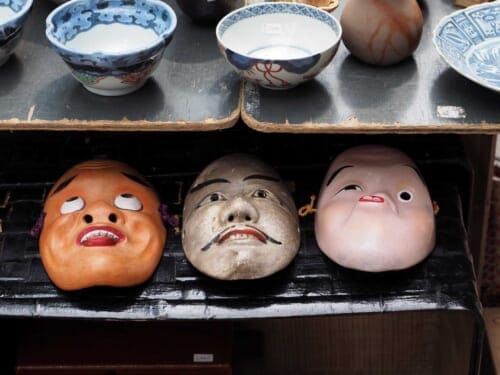
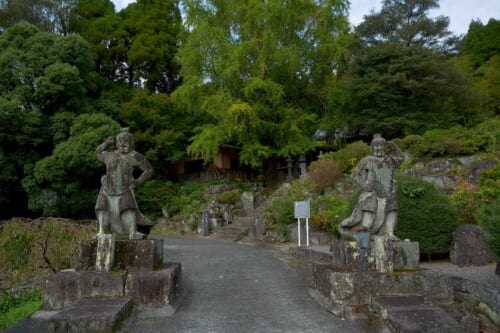
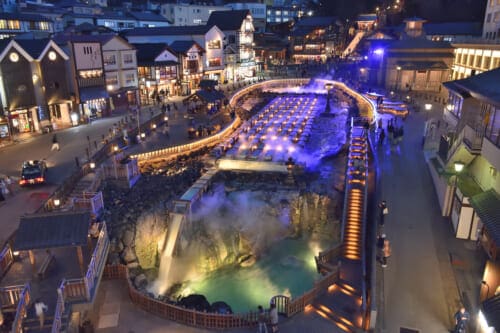


No Comments yet!